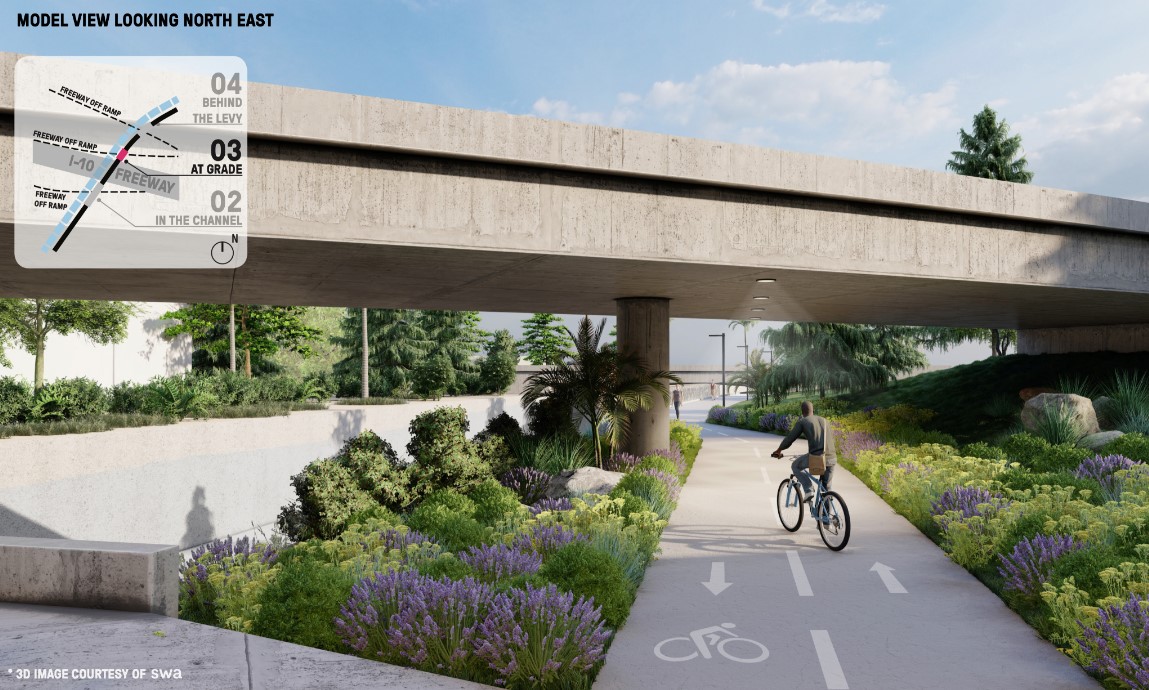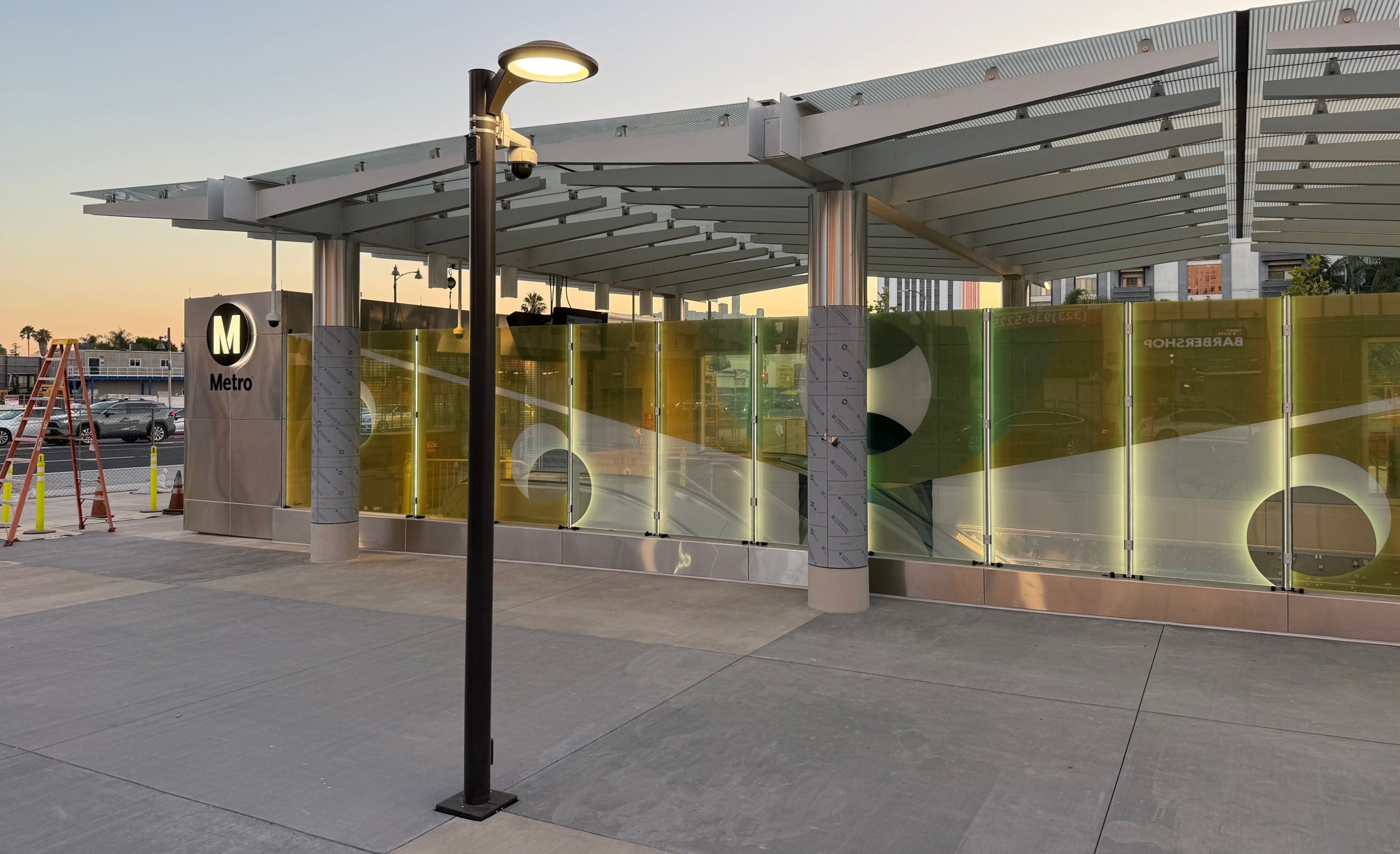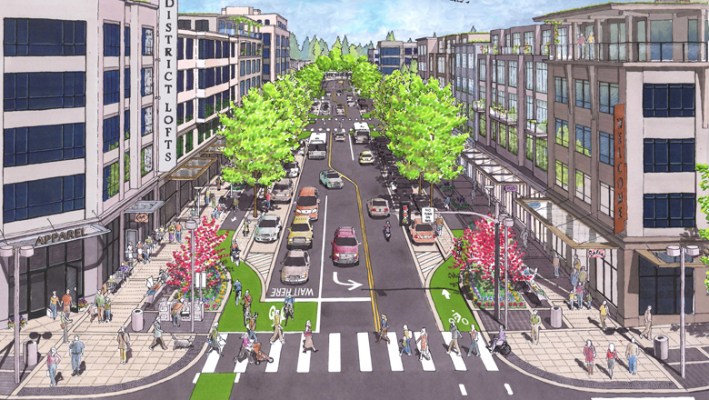
Transportation has always played a dominant role in shaping our urban environment. Historically, cities were built around the basis of everyday activities on foot; consequently, the prominent urban form was dense, compact, with high concentration of mixed-use development. As transportation technology progressed, the design of cities dramatically changed, in many ways to the detriment of the pedestrian. In Los Angeles, nothing has had a greater impact on the landscape than the car. Widened lanes, expansive freeways, large multi-lane systems, sprawling parking lots, and other amenities built around the needs of the car have resulted in a public realm that is often unsafe, unappealing, and stressful for the public.
These issues have created challenges for L.A. planning professionals who want to enhance and balance our transportation infrastructure. How can we retrofit the existing urban fabric to meet the needs of multi-modal transportation? We have already experienced a response to this with a rise in the number of projects aimed at implementing more progressive transportation planning practices within the last decade. Bike lanes are being installed, sidewalks widened, and public transit lines expanded. The May approval of the Mobility Plan 2035 by the L.A. City Council is a clear sign that a majority of our city’s leadership shares in a vision for creating a more livable city. Before this, the city lacked a cohesive vision or framework to institute these changes. How effective this plan will be remains to be seen, but in the least it is a step forward.
Of all the different forms of transportation to be focused on, walking is one of the most neglected in terms of infrastructure and policy development, but holds the most potential to enhance livability.
Increasing walkability should be a main focus of urban design and policy because it is the solution to many problems that plague our city including pollution, congestion, and obesity. It serves as a catalyst for increased physical activity, commerce, social interaction, and environmental sustainability. This past year, as a senior at Occidental College, I completed a yearlong research project aimed at identifying the best strategies for enhancing walkability in downtown Los Angeles. Within this project I compiled a twelve-step guide with the help of city planners, residents, business owners, architects, walking advocates, and more. Most guides to improve walkability include the big suggestions such as expanding mass transit, reducing parking, widening sidewalks, etc. Below I will list three of my steps that do not receive enough attention despite the fact that they have the power to dramatically improve walkability with minimal time and effort.

1. Plant More Trees
Planting trees is one of the most simple and cost effective ways of attracting pedestrians. Advantages include shade, reduction of ambient temperature in hot weather, absorption of pollution, reducing car speeds, and the creation of a barrier between people on the sidewalk and traffic. However, perhaps the most important benefit of planting trees is their contribution to aesthetics and creation of street character.
When walking down most streets in downtown you will find trees, but they are often far and few between. In many cases they are Ficus trees, and while they hold aesthetic appeal, they possess top-heavy root systems that tear up sidewalks and destroy underground piping causing millions of dollars in damage each year. Selecting approved species of trees, especially those that are drought tolerant, and planting them in strategic intervals will result in interconnected canopies that truly enhance the walking experience. (Much like the picture above). When replacing already planted trees, such as the Ficus, the city often plants juvenile specimens that provide a fraction of the benefits of an adult. Having foresight in tree replacement projects is essential. If planting trees is part of the plan, I would suggest purchasing the trees as a first priority, so when it is time to plant the tree, often times many years later, the trees will have had time to mature and offer more immediate benefits to the street.
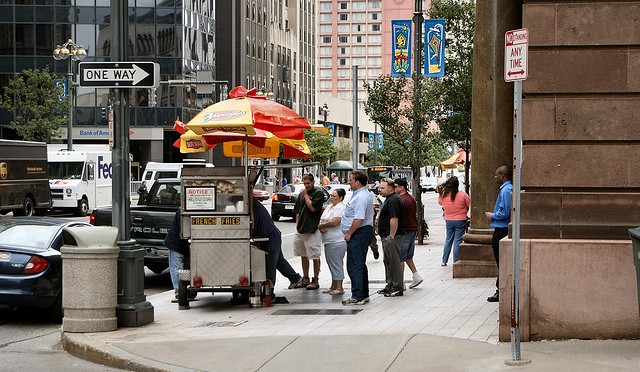
2. Legalize Street Vending
Street vending is an effective way to lure people outside of their homes and into the public realm. However, under current laws street vending is illegal in Los Angeles, albeit with a few small exceptions. While the debate to legalize street vending has received a fair share of attention in the past few years, the discussion usually revolves around its legality or health implications. What is often overlooked is how street carts can dramatically enhance the walkability of a street in a number of ways. A cart on a street corner adds a human dimension to a street that may otherwise be dominated by cars. Vending encourages people to walk outside and congregate, and crowds tend to attract even bigger crowds. Safety may even be increased as more people mean more “eyes on the street” discouraging crime and creating a sense of security. Areas that were once empty and unused can be transformed into hotspots of social interaction, embracing our city’s cultural diversity through the exchange of food.
In addition to the benefits for walkability, street vending has the potential to create jobs and provide healthier foods in low-income areas. Legalizing street vending by creating a citywide permit system would turn this illegal activity, already taking place across the city, into a regulated and taxable industry that will draw more people into the streets to enjoy Los Angeles. It must be noted that the city’s department for inspecting street vending is severely understaffed, so expanding this division must be a priority if street food is to be made legal.
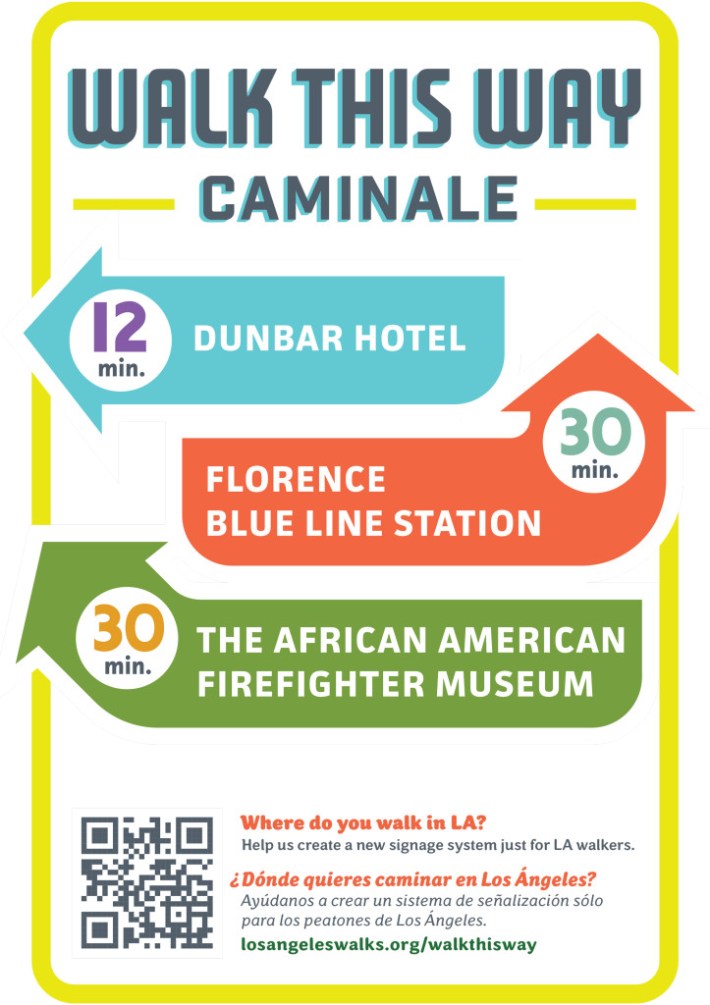
3. Pedestrian Signage
An interesting concept that is currently being developed by the walking advocacy group Los Angeles Walks, is pedestrian way finding for Los Angeles. The picture above is a draft design for one of these signs that will depict walking times, not distance, to popular destinations. (Note: studies have shown that listing times rather than distance encourages more people to make trips by foot). The goal of this project is to show neighborhood connectivity and change perceptions that many places are too far away to walk. The challenge here will be to create a uniform design that can be implemented and recognized across the city. An additional suggestion would be to create subway style maps that show walking times to a large number of places in a targeted area.
These three simple and low cost recommendations, not only exclusive to downtown, have the ability to transform uninviting streets into areas that attract people and encourage them stay. Redesigning Los Angeles around people, not cars, is the key to creating a more livable city that all Angelenos will benefit from.
Shawn Dunn recently graduated from Occidental College in 2015 with a BA in Urban & Environmental Policy. Dunn completed his senior thesis analyzing the best strategies for enhancing walkability in downtown Los Angeles. Dunn states "I am passionate about cities and learning how we can transform them to have a positive impact on all communities."
